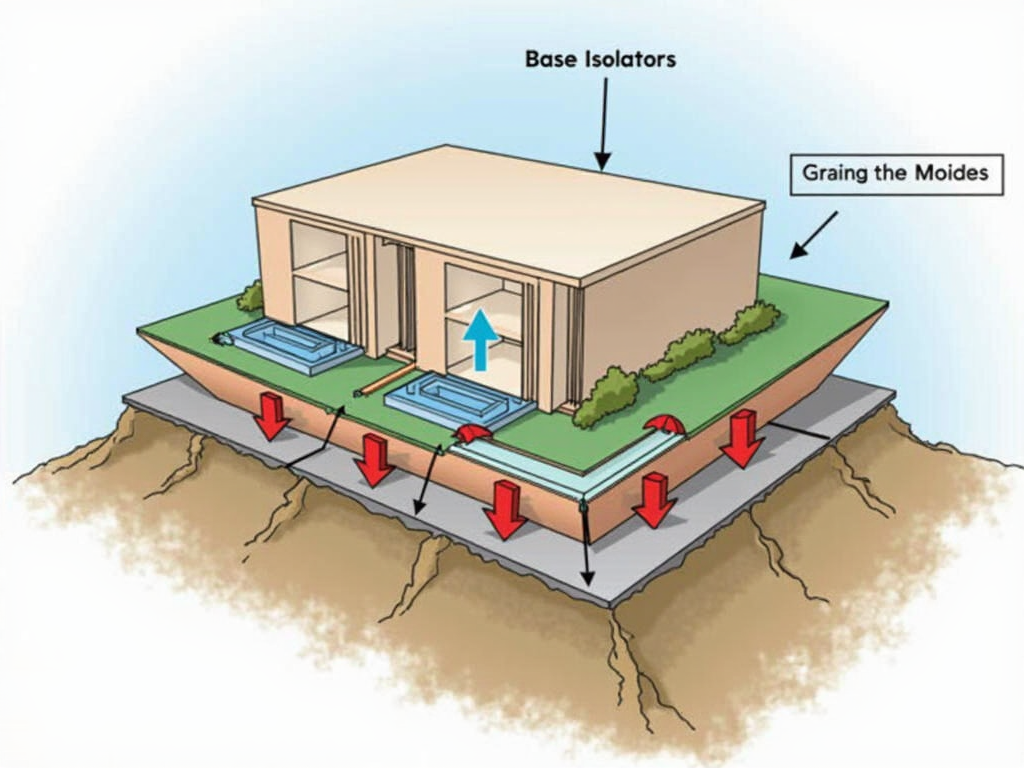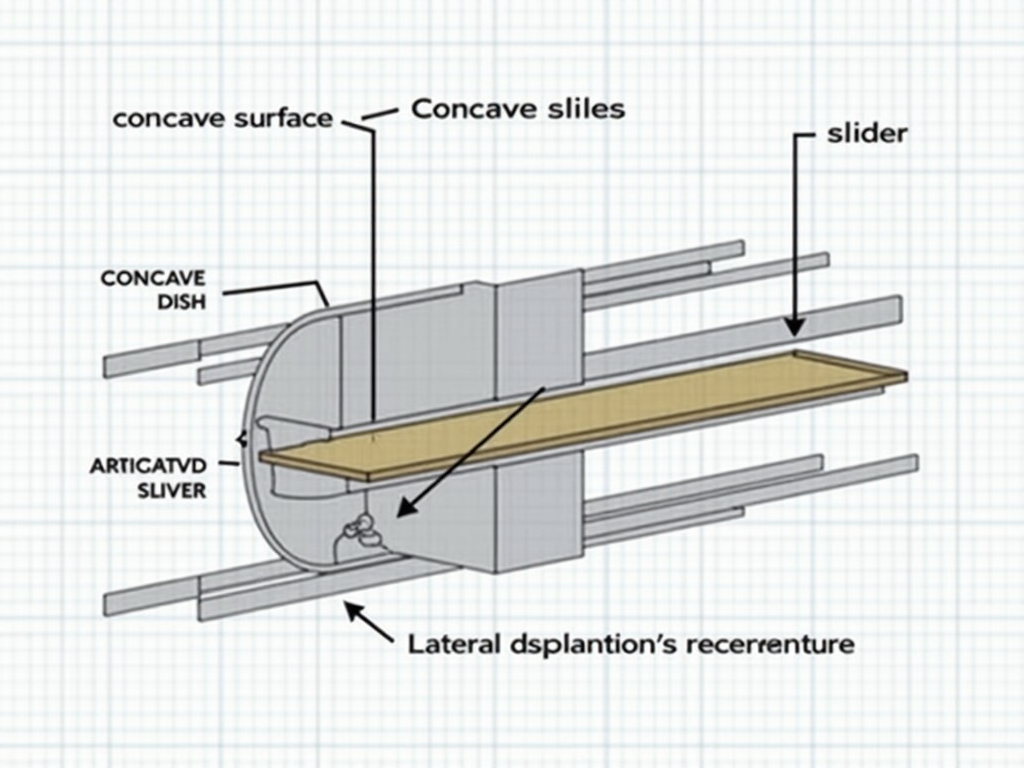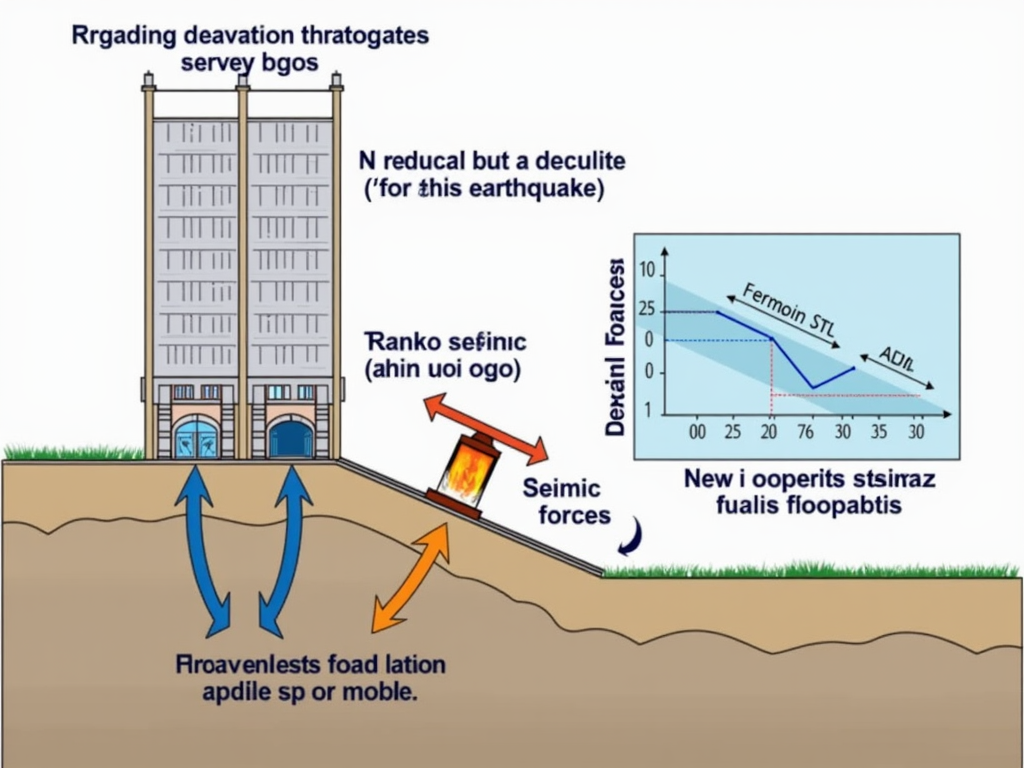Innovations in Seismic Design for Foundations: Building Stronger, Safer Structures
Earthquakes pose a significant threat to buildings and infrastructure, making seismic design a critical aspect of construction, especially in earthquake-prone regions. Foundations, as the base of any structure, play a pivotal role in ensuring stability during seismic events. Recent innovations in seismic design for foundations have revolutionized how engineers approach this challenge, introducing advanced techniques and technologies that enhance resilience and safety. This article delves into these innovations, offering insights into how they work and why they are essential for modern construction.
The Importance of Seismic Design in Foundations
Seismic design for foundations is not just about preventing collapse; it's about ensuring that structures can withstand the forces of an earthquake with minimal damage. Traditional foundation designs often relied on rigid connections and sheer strength, but these approaches can be insufficient in the face of powerful seismic activity. Innovations in this field focus on flexibility, energy dissipation, and adaptive responses to ground movement, providing a more holistic approach to seismic resilience.

Base Isolation Systems: A Game-Changer in Seismic Design
One of the most significant innovations in seismic design is the development of base isolation systems. These systems decouple the building from ground motion, allowing the structure to move independently of the earth's shaking. Base isolators, typically made of rubber or other flexible materials, absorb and dissipate seismic energy, reducing the impact on the building above. This technique has been successfully implemented in numerous structures worldwide, from hospitals to high-rise buildings, proving its effectiveness in protecting both the structure and its occupants.
How Base Isolation Works
Base isolation works by placing a layer of flexible bearings between the foundation and the superstructure. During an earthquake, these bearings allow the building to sway gently rather than being rigidly attached to the shaking ground. This movement reduces the acceleration and forces transmitted to the building, minimizing structural damage. The design of these isolators is highly sophisticated, often incorporating lead cores or other materials to enhance energy dissipation.

Energy-Dissipating Devices: Absorbing Seismic Shocks
Another innovative approach in seismic design is the use of energy-dissipating devices within the foundation. These devices, such as dampers, act like shock absorbers, converting seismic energy into heat or other forms of energy that can be safely dissipated. By reducing the amplitude of vibrations, these devices protect the structure from excessive movement and potential damage.
Types of Energy-Dissipating Devices
- Viscous Dampers: These devices use fluid dynamics to absorb energy, similar to how shock absorbers work in vehicles.
- Friction Dampers: By creating controlled friction, these dampers dissipate energy through heat.
- Yielding Dampers: Made from materials that deform under stress, these dampers absorb energy by undergoing plastic deformation.
Each type of damper has its own advantages and is chosen based on the specific needs of the structure and the expected seismic activity.

Advanced Materials: Strengthening Foundations
The use of advanced materials in foundation design has also contributed to improved seismic performance. Materials like fiber-reinforced polymers (FRP) and high-performance concrete offer superior strength and ductility compared to traditional materials. These materials can be used to reinforce existing foundations or incorporated into new designs, providing enhanced resistance to seismic forces.
Benefits of Advanced Materials
- Increased Ductility: Allows the foundation to deform without breaking, absorbing more energy.
- Higher Strength-to-Weight Ratio: Reduces the overall weight of the foundation while maintaining or increasing its strength.
- Corrosion Resistance: Extends the lifespan of the foundation, especially in harsh environments.
These benefits make advanced materials a popular choice for seismic design, particularly in regions with high seismic activity.

Rocking Foundations: Embracing Movement
Rocking foundations represent a paradigm shift in seismic design. Instead of resisting movement, these foundations are designed to uplift and rock during an earthquake, dissipating energy through this controlled motion. This approach reduces the forces transmitted to the superstructure and can be particularly effective for certain types of buildings.
How Rocking Foundations Work
In a rocking foundation, the base is designed to lift off the ground slightly during seismic activity, allowing the structure to rock back and forth. This movement is carefully controlled to prevent excessive displacement or instability. Post-tensioning cables or other mechanisms are often used to recenter the foundation after the earthquake, ensuring the structure returns to its original position.

Soil-Structure Interaction: A Holistic Approach
Understanding and accounting for soil-structure interaction is crucial in seismic design. Innovations in this area involve advanced modeling techniques that simulate how the foundation and the surrounding soil behave together during an earthquake. By considering the dynamic properties of both the structure and the soil, engineers can design foundations that are better attuned to the specific site conditions.
Techniques for Analyzing Soil-Structure Interaction
- Finite Element Analysis (FEA): Allows for detailed modeling of the foundation and soil, predicting their behavior under seismic loads.
- Shake Table Testing: Physical models are subjected to simulated earthquakes to observe their response.
- In-Situ Testing: Field tests, such as crosshole seismic testing, provide real data on soil properties and behavior.
These techniques enable engineers to optimize foundation designs for specific locations, enhancing their seismic performance.
Conclusion: The Future of Seismic Foundation Design
Innovations in seismic design for foundations are continuously evolving, driven by advances in technology, materials, and engineering practices. From base isolation systems to advanced materials and rocking foundations, these innovations are making structures safer and more resilient in the face of earthquakes. As research and development in this field progress, we can expect even more sophisticated solutions that further enhance the safety and stability of our built environment.





